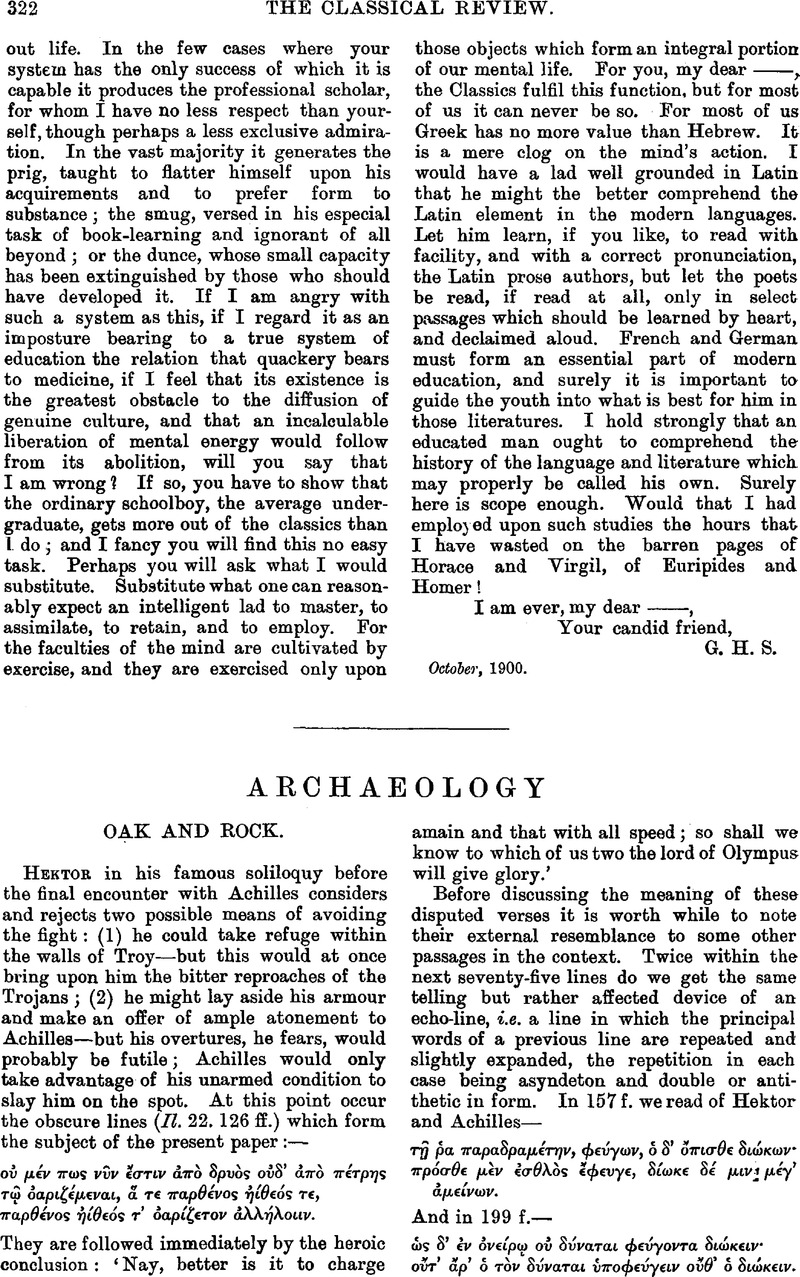No CrossRef data available.
Article contents
Archaeology
Published online by Cambridge University Press: 27 October 2009
Abstract

- Type
- Other
- Information
- Copyright
- Copyright © The Classical Association 1901
References
page 324 note 1 Ample evidence of this belief on Greek soil has been collected by Preller in Philologus 1852 p. 1 ff., Welcker Griechische Götterlehre i. 777 ff., G. F. Schömann Opuscula ii. 125 ff., and others.
page 325 note 1 With ![]() cp. Ex. 33. 11 ‘The Lord spake unto Moses face to face, as a man speaketh unto his friend.’
cp. Ex. 33. 11 ‘The Lord spake unto Moses face to face, as a man speaketh unto his friend.’
page 326 note 1 There is, perhaps, a reminiscence of our passage in the Hymn to Hermes, 54 ff., where we have another combination of αριστς and pedigree: ![]() .
.
page 330 note 1 i.e. the Rostra of opus quadratum.
page 330 note 2 I should have made it clear that I agree with Nichols in considering the semicircular structure to be the Graecostasis—that is, the Graecostasis of the late Republic, constructed perhaps only a few years before Caesar removed the Rostra from the Comitium. The arched structure, considered by Boni to be the Rostra of Caesar, I believe to be the Graecostasis of the second century B. c. Where the Graecostasis of the imperial period (see Jordan Topographie I2 p. 243) is to be placed, is a problem as yet unsolved.
page 330 note 1 Notizie degli Scavi, Oct. 1900.
page 331 note 2 Ibid. Nov. 1900.
page 331 note 3 Notizie degli Scavi, Dec. 1900.
page 331 note 4 Athenaeum, 15 June.
page 331 note 5 Berl. Phil. Woch., 4 May.
page 332 note 6 Ibid. 18 May.
page 332 note 7 Ibid. 1 June.




